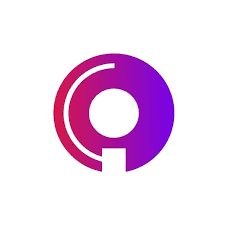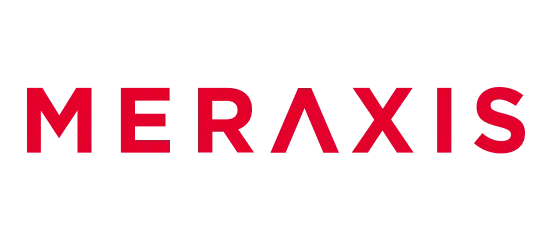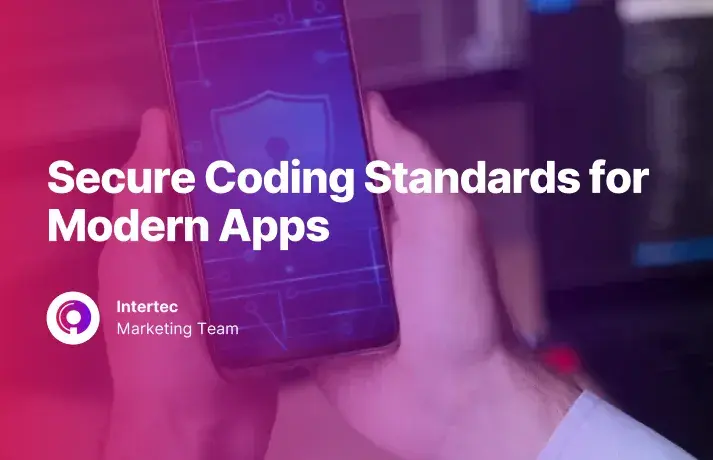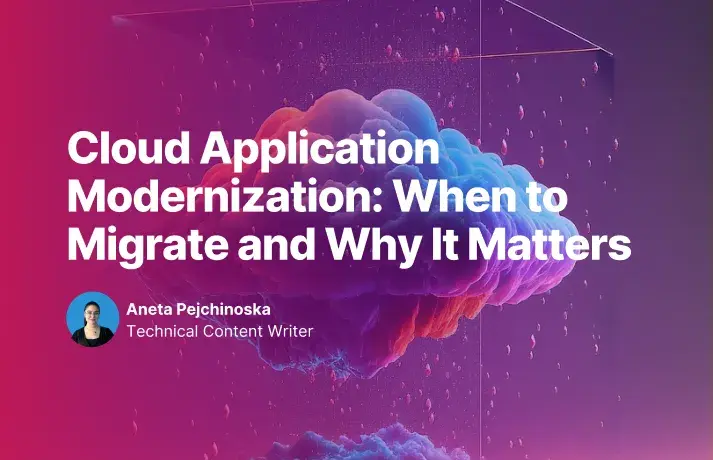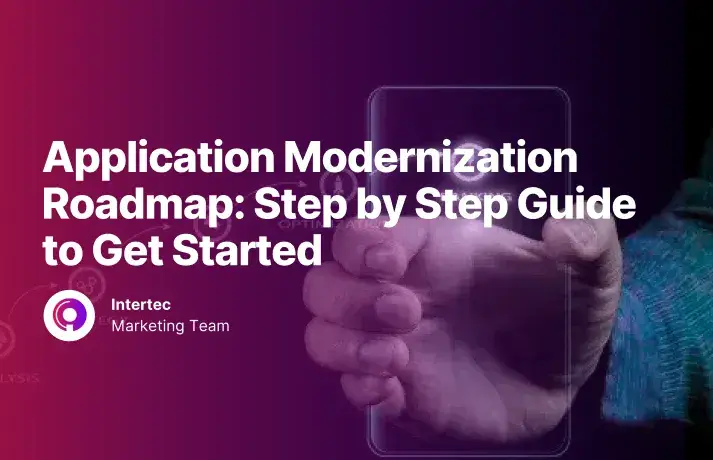Challenge 1: Budget Constraints and Cost Concerns
Any modernization effort can seem like a massive one-time expense. Teams often underestimate the hidden costs of data migration, training, and integration platforms. Without a clear ROI, many application modernization projects stall due to budget constraints.
How to overcome:
A phased modernization approach works best. Instead of rebuilding everything at once, break large modernization projects into smaller, manageable stages. Focus first on high-impact legacy applications or systems with measurable ROI.
Perform a cost-benefit analysis to show value through metrics such as reduced downtime, improved interoperability, and optimized business operations.
Challenge 2: Complexity of Legacy Systems and Technical Debt
Legacy systems are often tangled with technical debt - outdated programming languages, undocumented dependencies, and legacy code that no one fully understands.
Over time, companies layer new tools on top of old legacy systems, creating fragile ecosystems that slow down business processes and limit modernization efforts.
According to statistics, 60% of enterprise IT budgets are spent just maintaining legacy systems rather than driving innovation.
Common pain points include:
- High maintenance costs
- Security vulnerabilities
- Integration challenges with modern technologies
- Outdated user interfaces and poor customer experience
How to overcome:
Start with a comprehensive assessment of your existing systems. Conduct an application portfolio analysis to evaluate modernization readiness.
Next, create dependency maps for databases, APIs, and third-party tools. This visibility turns unknown risks into managed ones and helps prioritize your legacy application modernization roadmap.
Challenge 3: Data Migration Risks and Integration Issues
Data migration from outdated to modernized systems - especially in cloud environments - introduces serious security and compliance risks. Data loss, corruption, or misalignment are common, particularly when integration between old and new systems is poorly planned.
How to overcome:
- Use reliable ETL tools and CI/CD pipelines for smoother migrations.
- Conduct parallel testing in a safe environment before full deployment.
- Design modernization strategies around API-first architecture for seamless communication.
- Always plan for backup and restore to ensure data integrity.
When executed well, application modernization initiatives strengthen security, improve interoperability, and ensure regulatory compliance across all modernization processes.
Challenge 4: Skill Gaps and Resource Allocation
Modernizing enterprise Java applications or adopting cloud-native frameworks demands new skills - from serverless computing to continuous integration and delivery (CI/CD).
Yet, many organizations face skill shortages, leaving internal teams overwhelmed by both routine operations and modernization projects.
How to overcome:
- Invest in upskilling programs focused on modern programming languages and cloud technologies.
- Partner with external experts for incremental modernization.
- Build a dedicated modernization team to avoid conflicting priorities.
Accenture reports that organizations investing in internal capability-building during modernization efforts are 2.4× more likely to meet performance goals and achieve an enhanced user experience.
Challenge 5: Resistance to Change and Organizational Inertia
Even the best modernization strategies fail when people resist change. Employees often fear disruptions to daily workflows or unfamiliar modern systems.
How to overcome:
- Create a modernization strategy that includes strong change management and transparent leadership communication.
- Secure executive sponsorship to signal top-level support.
- Clearly demonstrate the business impact - faster workflows, stronger compliance, and better user experience.
- Celebrate small wins throughout the modernization journey to maintain momentum.
When people see tangible improvements, resistance fades and trust builds.
Challenge 6: Cloud Migration and Scalability Limitations
Treating the cloud as a simple destination instead of an integrated modernization process is a significant pitfall. Rehosting a monolithic legacy application without refactoring often results in poor performance and inflated costs.
How to overcome:
- Refactor apps using microservices, containers, and serverless computing.
- Use cloud services that enable continuous delivery and flexible scaling.
- Build integration platforms to ensure seamless communication between environments.
Challenge 7: Vendor Lock-In and Platform Dependency
Over-reliance on one vendor limits flexibility and inflates costs. Vendor lock-in can severely restrict scalability and innovation.
How to overcome:
- Adopt multi-cloud or hybrid cloud strategies.
- Use open-source frameworks and cloud-native tools for portability.
- Implement Kubernetes and container orchestration for easier migration.
This incremental approach ensures freedom of choice and adaptability as technology frameworks evolve.
Additional Modernization Challenges to Watch
Even after modernization, new obstacles can arise:
- Performance bottlenecks under heavy loads
- Security concerns and evolving compliance requirements
- Lack of visibility into modernization KPIs
To overcome these:
- Continuously test using real workloads.
- Implement monitoring, access controls, and audit trails.
- Use CI/CD pipelines to maintain data integrity and ensure continuous modernization.
Conclusion: Navigating the Path with Confidence
There’s no denying it - modernizing legacy applications is complex. The modernization process comes with key challenges, from budget constraints to technical debt and data migration hurdles.
But by combining careful planning, a clear modernization strategy, and trusted tools, organizations can transform outdated systems into modern solutions that drive competitive advantage and long-term value.
At Intertec, our modernization initiatives align with SOC 2, ISO 27001, and GDPR compliance standards, ensuring your modernization journey remains secure and audit-ready.
Application modernization efforts may be challenging, but they’re transformative. If you’re unsure where to start, begin with a modernization readiness assessment and take an incremental approach.
And if you prefer a trusted partner, Intertec is ready to help you optimize legacy applications, ensure data security, and deliver an enhanced user experience - all while keeping your modernization initiatives aligned with business goals and compliance frameworks.
